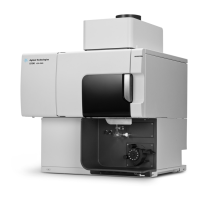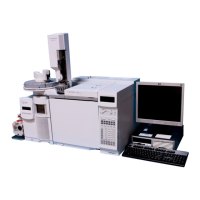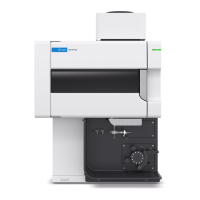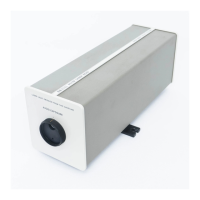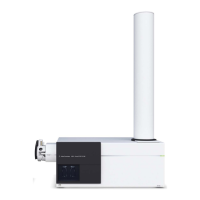Agilent 5110/5100 ICP-OES Service Manual Agilent Restricted 165
5 Troubleshooting
Precision Failure Analysis Table
Failing Precision can also be a symptom of low Sensitivity (Low Signal to Background ratios).
Make sure intensities are correct (previous section) before attempting to resolve Precision
issues.
Poor or high relative standard deviations are generally caused by poor functioning of the sample
introduction system.
Precision Failure Analysis Table
Precision - Fault Finding Diagnostics
Follow the diagnostic below in the order specified to minimize any rework needs.
Failure Mode (Precision) Possible cause Possible cause (Next level)
Red indicates a probable service call required
All or most Wavelengths Failed Sample Introduction components
contaminated
Spraychamber walls dirty (Water Beading)
Nebulizer partially blocked (Uneven spray)
Nebulizer tip damaged
Torch injector tube contaminated
Inconsistent sample delivery Pump Tube Pressure incorrect
Pulsations due to low pump speed
Crimped or damaged pump tube
Uptake delay time too short for sample uptake tubing length
(first reading low).
Optimization of parameters Nebulizer Flow
Viewing height (Radial)
Wavelengths off peak Instrument warm up
Instrument Calibration
Running partially soluble (salts) Partial blocking of nebulizer and injector tube
High Salts Partial Blocking of Nebulizer and injector tube.
Previously running organics Contaminated Spraychamber, Nebulizer, Torch injector
Unstable plasma Contaminated Argon
Air Leak
RF system failing
Electronic Noise Camera, / Control PCA, SSRF
Some Wavelengths failing Wavelengths off peak Instrument warm up
Instrument Calibration
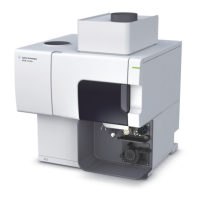
